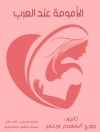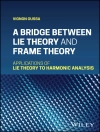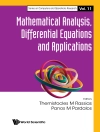The focus of this book is on the further development of the classical achievements in analysis of several complex variables, the analytic continuation and the analytic structure of sets, to settings in which the q-pseudoconvexity in the sense of Rothstein and the q-convexity in the sense of Grauert play a crucial role. After giving a brief survey of notions of generalized convexity and their most important results, the authors present recent statements on analytic continuation related to them.
Rothstein (1955) first introducedq-pseudoconvexity using generalized Hartogs figures. Słodkowski (1986) defined
q-pseudoconvex sets by means of the existence of exhaustion functions which are
q-plurisubharmonic in the sense of Hunt and Murray (1978). Examples of
q-pseudoconvex sets appear as complements of analytic sets. Here, the relation of the analytic structure of graphs of continuous surfaces whose complements are
q-pseudoconvex is investigated. As an outcome, the authors generalize results by Hartogs (1909), Shcherbina (1993), and Chirka (2001) on the existence of foliations of pseudoconcave continuous real hypersurfaces by smooth complex ones.
A similar generalization is obtained by a completely different approach using L²-methods in the setting of q-convex spaces. The notion of q-convexity was developed by Rothstein (1955) and Grauert (1959) and extended to q-convex spaces by Andreotti and Grauert (1962). Andreotti–Grauert’s finiteness theorem was applied by Andreotti and Norguet (1966–1971) to extend Grauert’s solution of the Levi problem to q-convex spaces. A consequence is that the sets of (q-1)-cycles of q-convex domains with smooth boundaries in projective algebraic manifolds, which are equipped with complex structures as open subsets of Chow varieties, are in fact holomorphically convex. Complements of analytic curves are studied, and the relation of q-convexity and cycle spaces is explained. Finally, results for q-convex domains in projective spaces are shown and the q-convexity in analytic families is investigated.
Tabela de Conteúdo
1. Analytic Continuation and Pseudoconvexity.- 2.
q-Plurisubharmonicity.- 3.
q-Pseudoconvexity.- 4.
q-Convexity and
q-Completeness.- References.- Index.












